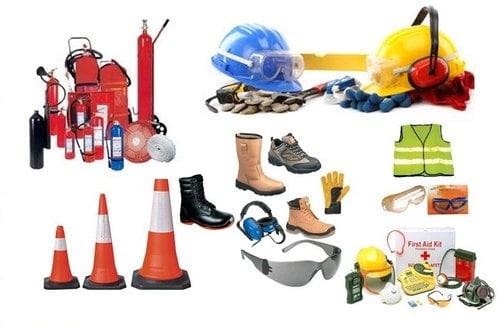Tips to Select the Right Tools and Ensure Job Safety

Selecting the right tools for any job is a fundamental factor in ensuring job safety and efficiency. Whether you’re a professional or tackling a home improvement task yourself, the tools you operate affect your work quality. Therefore, the right equipment is not a luxury but a necessity. You must also use the right tools for particular responsibilities to perform them efficiently and correctly.
In this article, we will tell you about essential tactics to make sure you pick the right tools to improve your productivity.
Tactics to Choose the Right Tools for Job Safety
It is essential for employees to understand the terms to choose the right tools for job safety. It will also help them to perform their tasks more accurately and easily. Here, you will get to know some of the best and practical tactics to select the right tools:
Assess the Job Requirements
Firstly, it is important to assess the job requirements thoroughly before starting any project. You should know that understanding the scope of work and the materials involved. Further, you must know the specific tasks you need to perform to select the right tools. This initial assessment will assist you in determining the varieties of tools you’ll need, whether hand tools or specialized tools.
You need to consider factors along with the size and complexity of the task. Also, do not forget the materials you will be operating with and any particular challenges you may encounter. A clear insight into the job’s demands is important in making informed tool choices and ensuring safety.
Choose the Right Type of Tool
After assessing the job requirements thoroughly, it is time to select the type of tool. Hand tools and power tools are the two foremost categories; inside these classes, you can pick out a huge range of tools. For example, if you are going to make furnishings, you may need some tools manufactured from concrete and metallic. These kinds of equipment assist you in performing obligations efficiently and effortlessly with wood. You have to recollect the following:
- Hand Tools: They are manually operated tools and are versatile for a wide range of tasks. Some standard hand tools include hammers, screwdrivers, pliers, and wrenches. They are suitable for jobs that require precision and control.
- Power Tools: Power tools are motorized and are potent to expedite tasks enormously. Drills, saws, grinders, and sanders are examples of power tools. Select the power tool according to the task, like choosing a circular saw for cutting wood or an angle grinder for metal.
Prioritize Ergonomics and Comfort
Ergonomics play a crucial role in making sure job safety, particularly for tasks that require extended periods of tool usage. You should understand that choosing comfortable tools to hold and utilize reduces the risk of strain, fatigue, and accidents.
When selecting hand tools, pay attention to the handle design and grip of the tools. Tools ergonomic handles and non-slip surfaces are more comfortable and reduce the likelihood of slippage. For power tools, look for features like padded grips and adjustable handles to ensure comfort during extended operation.
Read Also: Network Slicing for Edge Computing: Everything You Should Know
Check for Quality and Durability
The superior durability of your tools is a crucial factor in ensuring the safety and performance of your job. High-quality tools are less likely to malfunction or destroy during use, lowering the chance of accidents. In addition, durable tools have an extended lifespan, saving you cash ultimately. When comparing a tool’s quality, you may consider the following:
- Material: Tools made from high-quality materials like steel or alloy tend to be more durable than those made from cheap materials.
- Brand Reputation: You should research and choose responsible brands known for producing reliable and long-lasting tools.
- Reviews: Read user reviews and seek recommendations from experienced professionals to get an idea of a tool’s performance and durability.
Maintain and Inspect Your Tools
It is also necessary to maintain and inspect your tools regularly to confirm your job safety. Neglecting tool maintenance can lead to unexpected failures or malfunctions, which may result in accidents that should not be done. Here are some maintenance tips to follow for your job safety:
- Clean your tools after use to protect against the accumulation of rust.
- You can lubricate your tools for moving parts to confirm smooth operation.
- Inspect tools for any signs of wear or damage, such as cracks, bent handles, or loose components.
- Sharpen cutting tools when they become dull to maintain their effectiveness and safety.
Safety Features and Accessories

Many tools come with built-in safety features and accessories to enhance job safety for employees. When selecting tools, you should consider those that offer advanced safety measures, such as:
- Blade guards for saws and cutters to prevent accidental contact.
- Safety switches that require two-handed operation for power tools.
- Dust collection systems to minimize airborne particles and improve air quality.
- Personal protective equipment (PPE) like goggles, gloves, and ear protection.
Training and Education
Choosing the right tools is only part of the equation when it comes to job safety. Proper training and education on how to use the tools correctly are equally important for you. Whether you’re a professional tradesperson or a DIY enthusiast, investing in training prevents accidents and improves the quality of your work. You are allowed to follow the suggestions, such as:
- Attend workshops, classes, or courses specific to your trade or project to make yourself educated about how tools can be used.
- Seek guidance from experienced professionals or mentors who can provide hands-on training.
- You should also consult user manuals and online tutorials for tool-specific instructions.
Final Verdict
Selecting the proper gear and ensuring job safety go hand in hand. The right tools, whilst used efficaciously and appropriately, can substantially enhance your productivity and the first-rate of your paintings. By carefully assessing job requirements, deciding on the right tools, prioritizing ergonomics and quality, and following safety suggestions, you can complete your projects with confidence and reduce the hazard of accidents. You must consider that protection is an obligation that falls on the user. Moreover, investing in the proper gear and training funds your well-being and the fulfillment of your projects.






